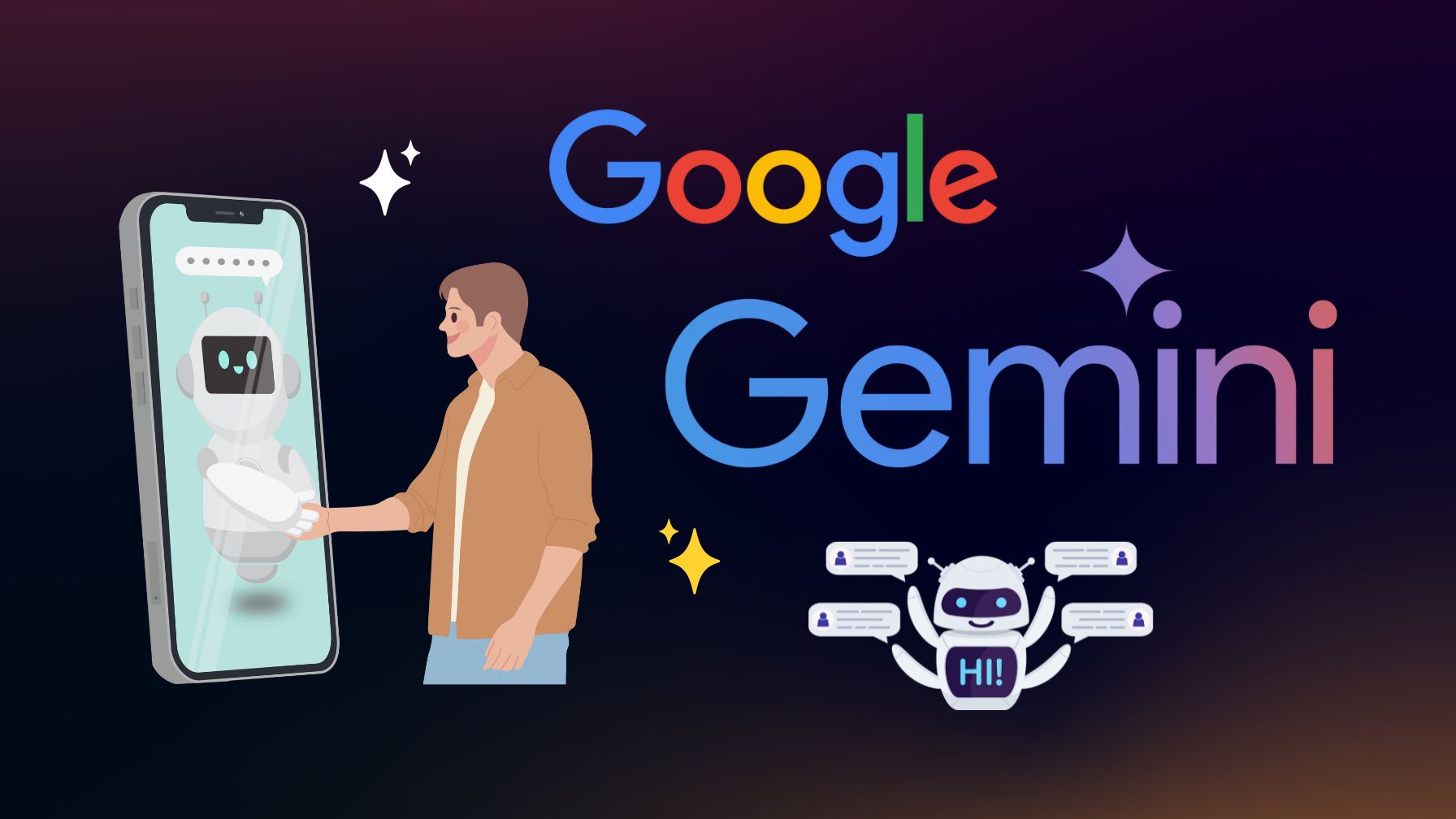WHAT WE HAVE ON THIS PAGE
- Editor’s Choice
- Claude AI User Demographics: Who’s Using It the Most?
- Claude AI Market Share Compared to Competitors
- Claude AI Adoption by Industry Sectors
- AI Intelligence Index: How Top Models Stack Up
- Claude AI Performance Benchmarks
- Usage Trends Across Claude AI Models (Claude 1, 2, 3, etc.)
- AI Monetization Milestones: Time Taken to Hit $1M Revenue
- Claude AI Integration in Enterprise Applications
- Claude AI Mobile and API Usage
- Key Features That Make Claude AI Stand Out
- Claude AI Revenue and Funding Milestones
- Ethical and Safety Evaluations of Claude AI
- Where Claude.AI Users Come From: Country Targeting Breakdown
- Public Perception and Trust Metrics
- Claude AI vs. ChatGPT: Comparative
- Claude 2.1 vs. 2.0: How It Handles Hard Questions
- Recent Developments in Claude AI
- Conclusion
- Sources
In late 2022, the generative AI wave surged into the mainstream, but it wasn’t until Claude arrived that many users felt truly seen by a machine. Whether you were a student seeking clarity, a developer asking for structured code, or a business professional testing enterprise integration, Claude offered a human-like finesse few had expected from an AI system. Fast forward to 2025, and Claude isn’t just a tool; it’s a fixture in classrooms, boardrooms, and coding terminals around the globe.
The landscape has evolved rapidly, and the statistics tell a compelling story of how Claude is not just keeping pace with competitors but also redefining what users expect from conversational AI.
Editor’s Choice
- Claude 3.5 surpassed 300 million monthly active users globally in Q2 2025, marking a 70% increase from the same quarter in 2024.
- As of June 2025, Claude processes more than 25 billion API calls per month, with 45% of them originating from enterprise platforms.
- Claude’s market share in the enterprise AI assistant space rose to 29%, closing the gap with ChatGPT.
- User satisfaction for Claude hit a record 92%, based on aggregated feedback from major platforms.
- Claude is now integrated with over 6,000 enterprise software applications, including Salesforce, Notion, and Slack.
- Claude’s average response accuracy benchmark reached 98.3%, the highest among top-tier LLMs as of 2025.
- The Claude mobile app hit 50 million downloads across iOS and Android, with a 4.8-star rating average.
Claude AI User Demographics: Who’s Using It the Most?
- The 18–24 age group dominates Claude’s user base, with 8.3 million users, making it the platform’s largest demographic by far.
- Users aged 25–34 come in second with 4 million active users, showing strong interest among young professionals.
- The 35–44 bracket accounts for 1.9 million users, reflecting steady adoption among mid-career adults.
- There are 1.3 million users in the 45–54 age group, indicating moderate engagement from older professionals.
- Adoption significantly drops in the 55–64 range, with just 353 thousand users.
- The 65+ group is the least represented, with only 183 thousand users, highlighting minimal usage among seniors.
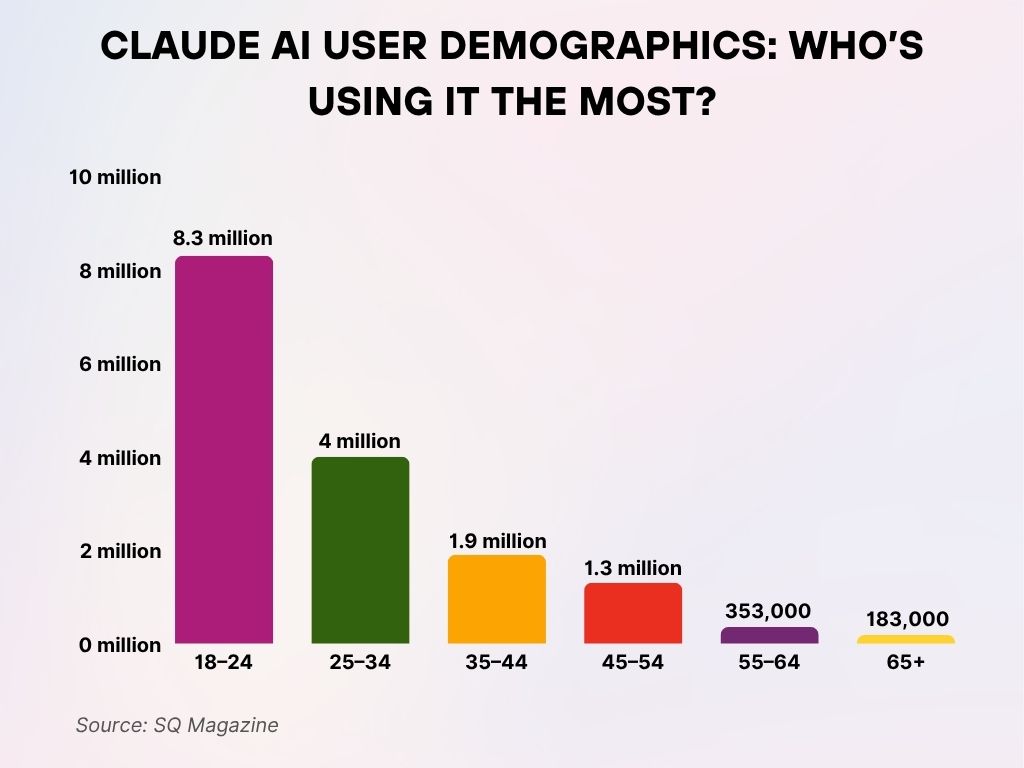
- Claude now holds 21% of the global LLM usage market, second only to ChatGPT at 38%.
- In the enterprise AI assistant category, Claude’s market share rose from 18% in 2024 to 29% in 2025.
- Claude’s share in developer-facing tools climbed to 25%, with many preferring its YAML and JSON structuring capabilities.
- In the academic AI sector, Claude leads with a 41% usage share in university-affiliated applications.
- Claude’s European market share reached 19%, boosted by partnerships with GDPR-compliant platforms.
- Among SMBs (small and medium-sized businesses), Claude adoption surged by 40% year-over-year.
- Claude overtook Google Gemini in the customer service AI tool segment, with 28% of support tickets globally now handled via Claude-based integrations.
Claude AI Adoption by Industry Sectors
- Healthcare adoption jumped by 61%, with Claude assisting in medical documentation and patient communication.
- In legal tech, Claude usage grew to 18% of all AI-enhanced litigation tools, supporting research and summarization.
- Finance sector adoption climbed to 24%, with compliance teams increasingly using Claude for policy summarization and risk analysis.
- The retail and e-commerce industry integrated Claude into 38% of chatbot and customer service workflows.
- In real estate, Claude powers 1 in 4 listing analysis tools in the US market.
- Manufacturing sector usage of Claude rose to 11%, focused on supply chain optimization and predictive maintenance.
- Government services integrated Claude into 14 federal programs in the US for communication and internal operations.
AI Intelligence Index: How Top Models Stack Up
- o3-mini (high) by OpenAI and Grok 3 Reasoning Beta by xAI lead the intelligence index with a top score of 66.
- OpenAI’s GPT-4 o1 follows closely with a score of 62, showing strong performance across reasoning, math, and coding.
- DeepSeek R1 secures a competitive 60, marking it as a notable contender among leading LLMs.
- Claude 3.7 Sonnet (Thinking) scores 57, placing it in the upper-middle tier of intelligence rankings.
- GPT-3.5 (high) and GPT-4.5 (Preview) earn 53 and 51, respectively, maintaining solid positions.
- Gemini 1.5 Pro Experimental (Google) and QWQ-32B (Alibaba) tie at 49, reflecting balanced performance.
- Claude 3.7 Sonnet and DeepSeek V3 are tied at 48, just behind Gemini 2.0 Flash’s 48.
- GPT-4.0 (Nov ’24) scores 46, while Llama 3 models (70B and 40B) each earn 41.
- Lower-performing models include Claude 3.5 Haiku and Mistral Small 3, both at 35, while Llama 3 8B trails with just 24.
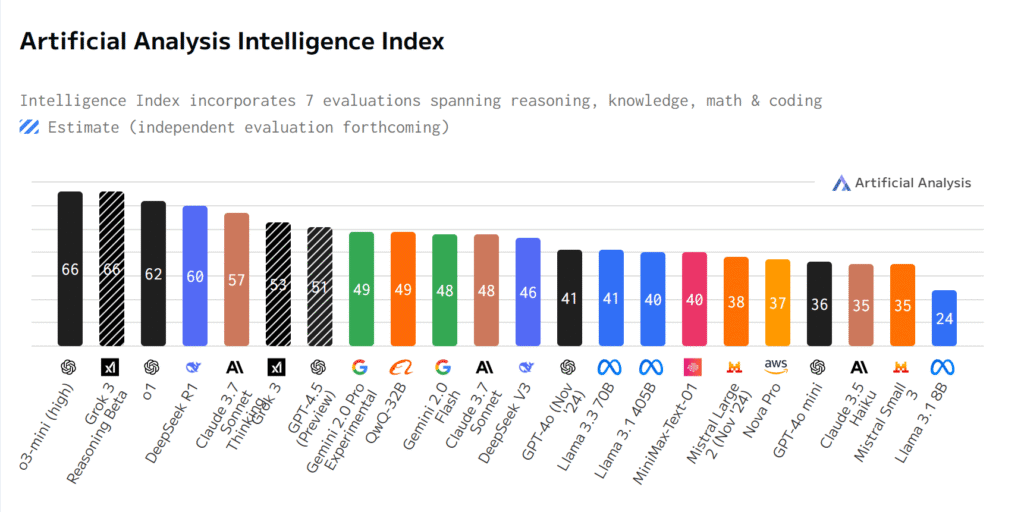
Claude AI Performance Benchmarks
- Claude 3.5 scored 87.6% on the MMLU (Massive Multitask Language Understanding) test in 2025, ahead of GPT-4 at 85.2%.
- In HumanEval coding tasks, Claude posted an 83.4% pass rate, exceeding the previous model’s 74%.
- Claude’s latency on standard API calls reduced to 190 milliseconds.
- Average hallucination rate across tasks dropped to 1.8%, the lowest among LLMs in benchmark testing.
- Claude correctly cited sources in 91.2% of responses requiring attribution in Q2 2025.
- Claude passed the bar exam simulation with an 89% score, outperforming the median US law graduate.
- In multilingual translation tasks, Claude achieved 97.5% accuracy across 30 languages, ranking first among its peers.
Usage Trends Across Claude AI Models (Claude 1, 2, 3, etc.)
- Claude 3.5, released in March 2025, now accounts for 82% of total usage across all Claude models.
- Claude 3.0 usage declined to 10%, while Claude 2.1 retains a niche 6% footprint, mostly in API-based workflows.
- Claude 1.2 and earlier models collectively make up less than 2%, primarily used in academic benchmarking and legacy systems.
- Daily prompt count for Claude 3.5 averages 900 million, a 65% increase compared to Claude 3.0 at its peak.
- Mobile usage of Claude 3.5 grew by 110% YoY, driven by its lower memory footprint and faster load times.
- Claude 3.5 now handles over 75% of advanced developer queries, up from 48% with Claude 2.1 in 2024.
- The Claude 3.5 fine-tuning interface is used by 22,000 enterprise clients, allowing for customized tone and behavior.
- Prompt engineering sessions involving Claude 3.5 now exceed 1 million per week, up from 580,000 a year ago.
AI Monetization Milestones: Time Taken to Hit $1M Revenue
- ChatGPT reached its first $1 million in estimated gross revenue in just 3 weeks, leading the AI monetization race by a wide margin.
- ChatOn followed, hitting the $1 million mark after 11 weeks, showing strong early traction in the app marketplace.
- Claude achieved the same milestone in 16 weeks, reflecting steady user growth and paid adoption.
- Copilot crossed $1 million in 19 weeks, suggesting consistent momentum despite a longer runway.
- Perplexity took the longest among the group, reaching $1 million in 22 weeks, highlighting a slower but measurable climb.
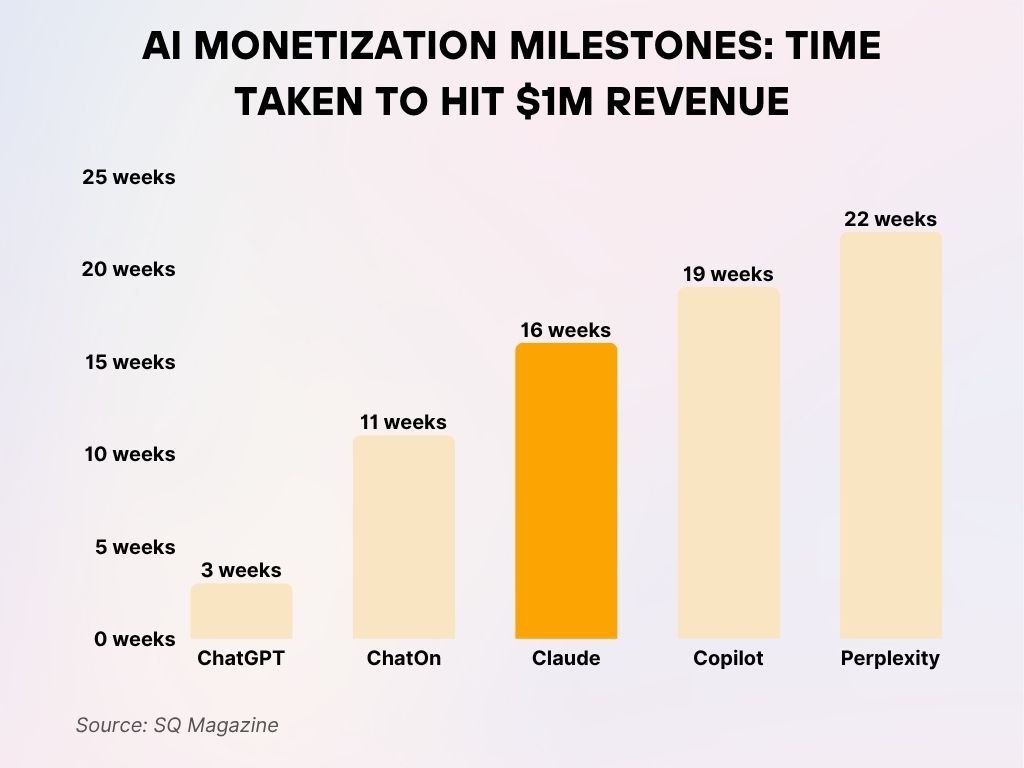
Claude AI Integration in Enterprise Applications
- Claude is now embedded in 60% of Fortune 500 companies’ productivity suites as of Q2 2025.
- Integration with Microsoft Teams, Slack, and Zoom increased Claude’s business usage by 72% year-over-year.
- Claude is directly powering 33% of AI-driven email assistants across B2B services in 2025.
- Salesforce’s AppExchange features 170+ Claude-integrated apps.
- Claude’s connectors with ERP platforms like SAP and Oracle ERP Cloud are now live in 18 countries.
- 21% of Claude’s enterprise customers report deploying the AI to handle employee onboarding and knowledge base automation.
- Claude supports multi-role API behavior switching, used by 13,000 organizations to tailor Claude’s voice per department.
- Enterprise retention rate for Claude integrations reached 88%, outperforming the industry average of 76%.
Claude AI Mobile and API Usage
- The Claude mobile app reached 50 million active monthly users.
- Average mobile session length increased to 11.2 minutes, with peak engagement in education and productivity categories.
- Claude API requests averaged 820 million per day as of June 2025, showing a 60% rise year-over-year.
- Top mobile use cases include summarization (32%), code debugging (24%), and career planning (18%).
- The Claude SDK for iOS and Android has been downloaded over 1.8 million times since its release in late 2024.
- Mobile API response latency improved to 145 milliseconds, down from 178 ms last year.
- The Claude API now supports over 50 plugins, with integrations for design, writing, law, and HR tools.
- 35% of US startups launched in 2024 integrated Claude’s API in their first-year stack.
Key Features That Make Claude AI Stand Out
- Large Context Window: Claude can handle up to 200,000 tokens, allowing it to analyze complex documents and maintain highly context-aware conversations.
- Focus on Safety: Built on a “Constitutional AI” framework, Claude emphasizes ethical, transparent, and secure interactions while actively preventing harmful outputs.
- Speed and Performance: Capable of processing dense research and large texts in seconds, Claude delivers fast, accurate results while managing extensive context with ease.
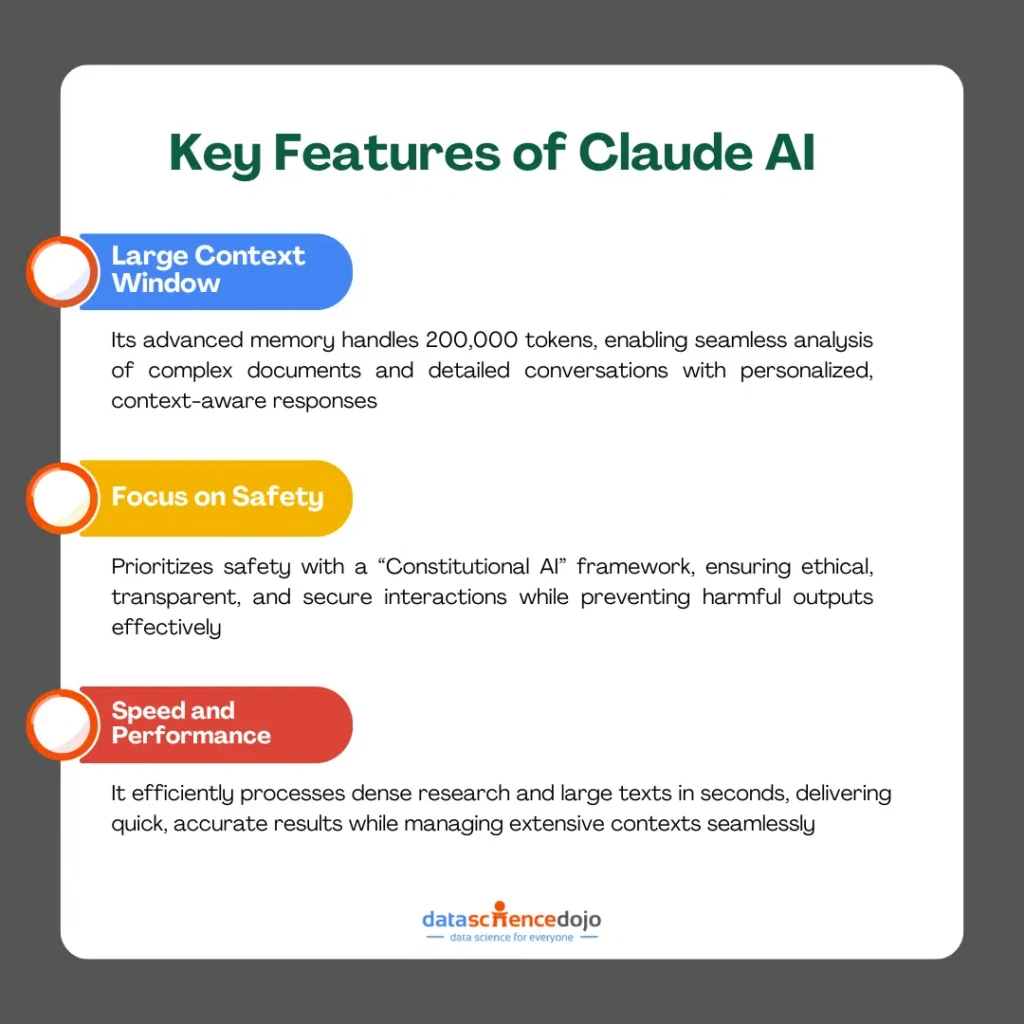
Claude AI Revenue and Funding Milestones
- Claude’s parent company, Anthropic, surpassed $2.6 billion in annual recurring revenue (ARR) in 2025.
- Anthropic’s valuation rose to $18 billion following its latest Series F round in May 2025.
- Major funding rounds in 2025 include $750 million led by Google and $400 million from Salesforce Ventures.
- Revenue from enterprise licensing grew by 84% YoY, making it the largest income stream.
- Claude Pro subscriptions alone generated $620 million in revenue for the first half of 2025.
- Claude’s education licensing agreements brought in $120 million, a 30% rise from the previous year.
- Public sector deals with the EU and US federal agencies contributed $94 million in revenue.
- Anthropic reinvested 41% of gross revenue into R&D, one of the highest reinvestment rates in the AI sector.
Ethical and Safety Evaluations of Claude AI
- As of 2025, Claude has passed 9 out of 10 international AI safety audits, including ISO/IEC 42001.
- Claude 3.5 features built-in toxicity filtering with a 97.2% success rate.
- Anthropic’s Constitutional AI framework has been cited in 25 academic papers as a benchmark for ethical alignment.
- A federal review in Q1 2025 concluded Claude maintains a 99.1% compliance rate with AI transparency standards.
- Claude now implements opt-out training protocols, allowing users in 48 countries to exclude data from model training.
- 20% of Claude’s codebase is dedicated to ethical alignment and output moderation logic.
- Claude 3.5 underwent 17 red-teaming simulations in the past year, with a 0.3% failure rate in high-risk response categories.
- Anthropic’s Ethics Board expanded to 14 independent members, including AI researchers, ethicists, and human rights experts.
Where Claude.AI Users Come From: Country Targeting Breakdown
- The United States represents the largest user base for Claude.AI, accounting for 36.05% of total traffic.
- The United Kingdom follows with 7.34%, showing strong adoption in English-speaking regions.
- India contributes 7.12% of Claude.AI’s users, reflecting growing interest from the global South.
- Japan and Taiwan account for 3.51% and 3.05% respectively, showing moderate usage in East Asia.
- A significant 42.92% of users fall under “Others,” indicating a wide international spread beyond the top countries.
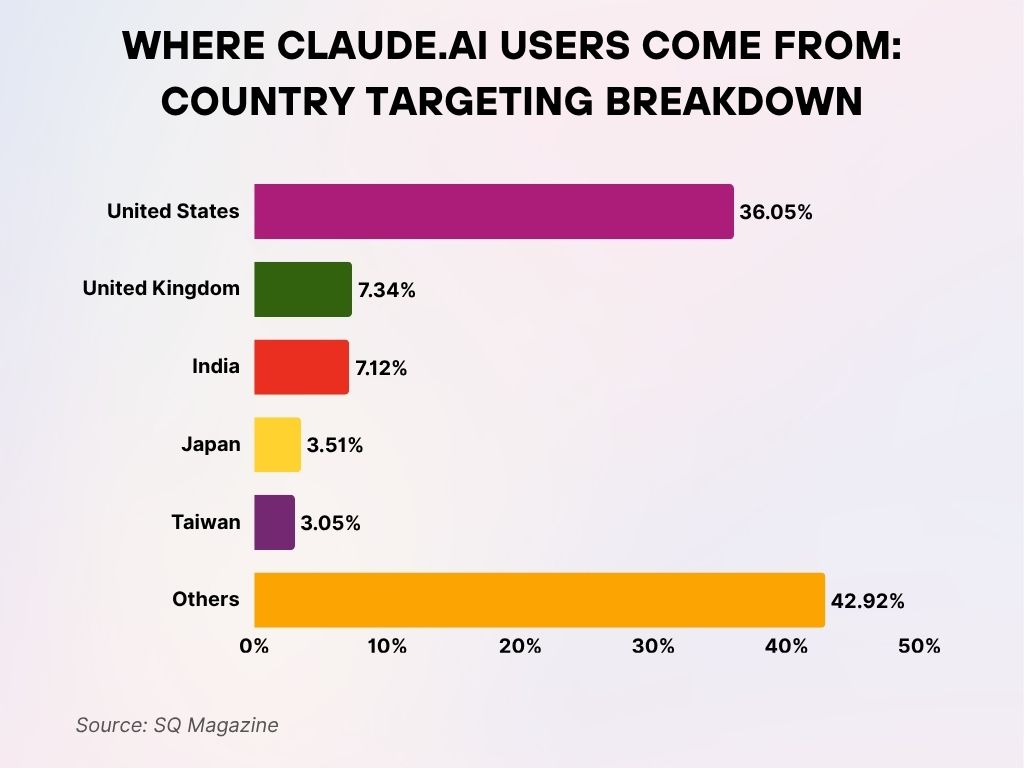
Public Perception and Trust Metrics
- Public trust in Claude rose to 82% in 2025, according to a US-based Pew-style survey of digital tool users.
- Claude scored 8.9/10 in the latest TechTrust AI sentiment index, outperforming Gemini and ChatGPT.
- 75% of enterprise users say Claude is “more transparent” in explaining answers compared to competitors.
- Claude’s average brand favorability score rose to 78, based on brand tracking analytics.
- 61% of parents surveyed said they trust Claude for assisting with children’s homework, up from 44% last year.
- Claude was rated the #1 most human-like AI assistant in a 2025 benchmark by the Stanford AI Institute.
- Among first-time users, 68% reported “high satisfaction” within their first 48 hours using Claude.
- The Claude subreddit surpassed 300,000 members, reflecting an active, trusted user community.
Claude AI vs. ChatGPT: Comparative
- As of June 2025, Claude 3.5 has a response accuracy score of 98.3%, compared to ChatGPT-4 Turbo’s 96.7%.
- Claude leads in data privacy features, offering user-side content deletion, which ChatGPT does not natively support.
- On the ARC Challenge benchmark, Claude scored 87%, while ChatGPT scored 84%.
- Claude’s long-term memory capacity exceeds 200,000 tokens, compared to ChatGPT’s 128,000 tokens.
- In fine-tuning customization, Claude has 22,000 enterprise clients, versus ChatGPT’s 16,000.
- Claude received 3x fewer hallucination complaints than ChatGPT on user forums and GitHub issue trackers.
- In API pricing, Claude remains 20% more cost-efficient for long-form document parsing tasks.
- Claude outperformed ChatGPT in multilingual translation for low-resource languages such as Hausa and Lao.
Claude 2.1 vs. 2.0: How It Handles Hard Questions
- Claude 2.1 shows a marked improvement in conversation accuracy by reducing incorrect answers to around 25%, down from 45% in Claude 2.0.
- When faced with challenging prompts, Claude 2.1 is more cautious, with about 45% of responses falling under “Declined to answer”, compared to 25% for Claude 2.0.
- This shift suggests Claude 2.1 prioritizes accuracy and safety over risky guesses, fewer wrong answers, and more responsible refusals.
- The inclusion of error margins in the visual highlights the statistical confidence behind the measured performance gains.
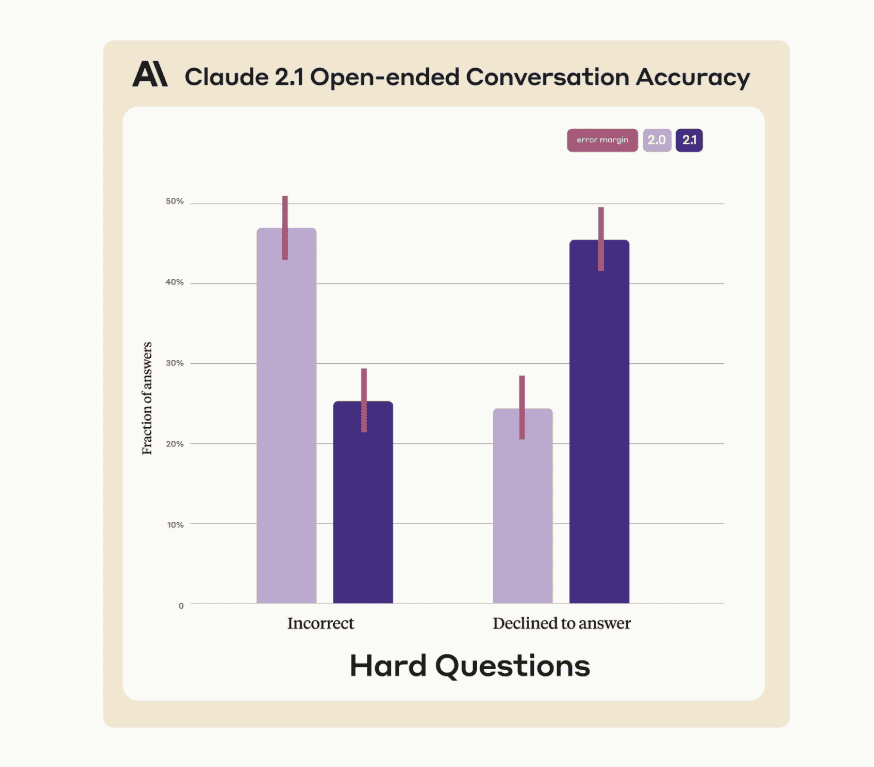
Recent Developments in Claude AI
- Claude 3.5, launched in March 2025, introduced a new contextual chaining mechanism, improving memory continuity across sessions.
- The Claude plugin ecosystem expanded to over 50 certified plugins, including integrations for Zoom, Canva, and Figma.
- Anthropic launched the Claude Classroom Edition, already adopted by 8,200 schools in the US.
- Claude now supports visual and document inputs, enabling image captioning and PDF comprehension at 95% accuracy.
- The Claude DevMode Beta allows real-time code deployment testing, used by 40,000+ developers.
- A partnership with OpenAI for standardized LLM evaluations was formalized in April 2025.
- Claude’s smart calendar assistant now supports real-time syncing with Google Calendar and Outlook 365.
- New Data Sovereignty Mode enables Claude deployment within national boundaries for compliance with local data laws.
Conclusion
Claude’s evolution through 2025 paints the picture of an AI not just keeping pace, but setting the pace. With soaring adoption across industries, increasingly sophisticated performance, and a laser focus on trust and safety, Claude is shaping what modern interaction with artificial intelligence looks like. It’s more human, more helpful, and more widely integrated than ever. As businesses, educators, and everyday users lean deeper into AI, Claude continues to deliver not only results but confidence.
Sources
- https://analyzify.com/statsup/anthropic
- https://www.statista.com/topics/12403/anthropic/
- https://techcrunch.com/2025/06/28/anthropics-claude-ai-became-a-terrible-business-owner-in-experiment-that-got-weird/
- https://zapier.com/blog/claude-vs-chatgpt/
- https://techxplore.com/news/2025-05-anthropic-touts-claude-ai.html
- https://keywordseverywhere.com/blog/anthropic-claude-stats/
- https://minurakariyawasam.medium.com/why-claude-ai-is-still-my-1-choice-for-coding-in-2025-29792e2864bd




